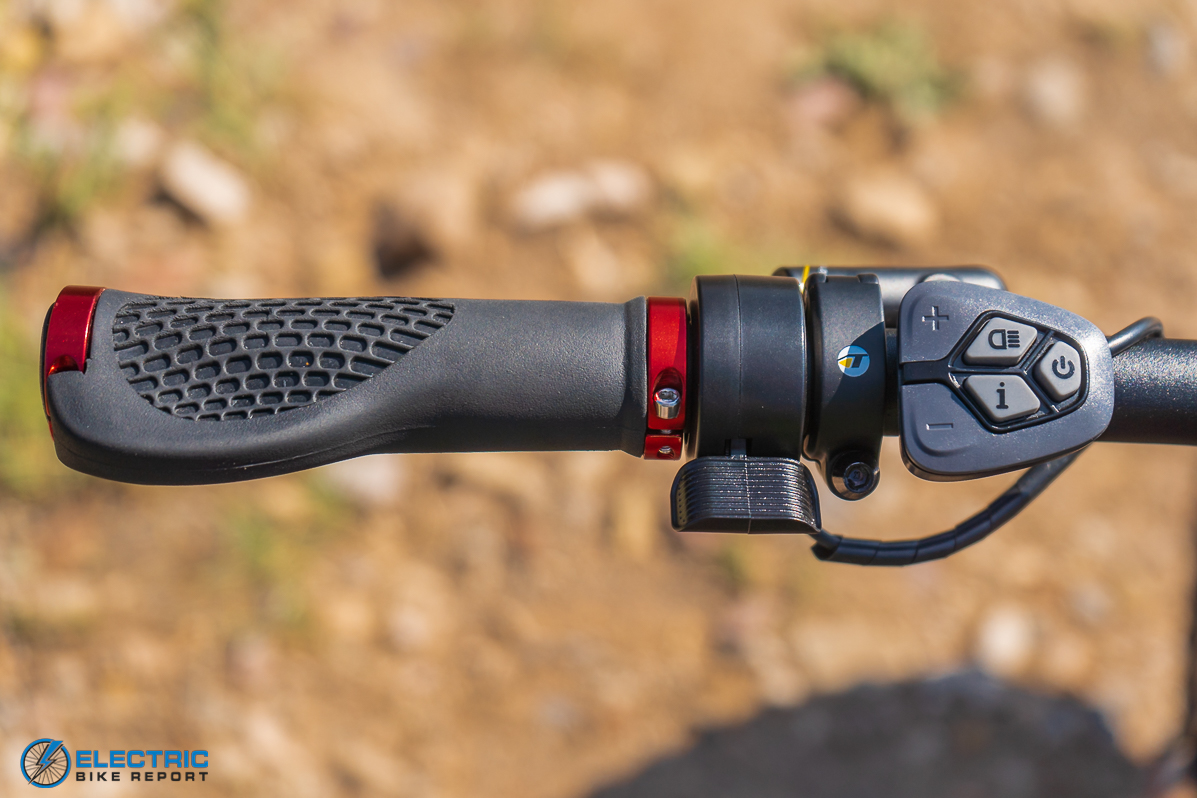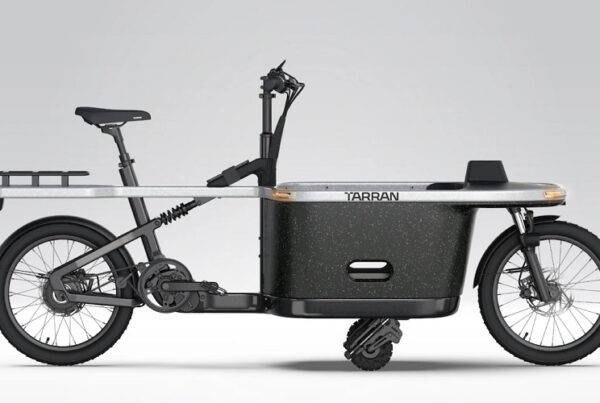Some links may be affiliate links. We may get paid if you buy something or take an action after clicking one of these.

Can you ride an electric bike without a license? In most U.S. states e-bike riders are not required to have a valid driver’s license, but it really depends on where you live.
Unfortunately e-bike law in the U.S. can be messy and difficult to understand. Thus far, it’s been largely left up to individual states to determine what qualifies as an e-bike and how those bikes and riders are regulated. About two-thirds of U.S. states have adopted a “classified” system that categorizes e-bikes into three tiers based on speed, motor size and whether the bike has a throttle. But in the states that haven’t, e-bike riders are subjected to a host of rules — ranging from laws around licensing and registration to speed and motor size restrictions — that may be unique to that specific state.

The thumb throttle on a Bakcou Storm electric fat bike. Because of this throttle, the Storm is considered a Class 2 e-bike.
E-bike law can even change within a state’s bounds depending on whose land you’re riding on. But never fear, fellow e-bike enthusiasts, there is a method to this legal madness (for the most part) and just like driving a car, the laws get easier to understand and follow as you learn some of the basics.
This post will help lay out those basics so hopefully you can better know what you can and can’t do on your e-bike.
How to find your local e-bike rules and regulations
About 36 U.S. states — or roughly two thirds of the country — have adopted some form of the three class e-bike legislation, according to People for Bikes, the nation’s leading bicycle advocacy organization.
This legal framework places e-bikes into three categories based on a few factors and regulates e-bikes much the same as traditional bicycles, meaning there is no special e-bike licensing required and no registration. Though, based on speed, there may be some restrictions on where e-bikes can be ridden and the maximum motor size is 750W.

A sticker classifying an e-bike as a “Class 2,” meaning it has a throttle that can operate the motor until 20 mph.
This “classified” system works like this:
- Class 1: E-bikes that only provide assist when the rider is pedaling. The maximum motor-assisted speed is 20 mph, though you can pedal under your own power faster than that.
- Class 2: This type of e-bike has a throttle that can power the bike up to 20 mph.
- Class 3: The quickest of the bunch, the motor on this type of e-bike can assist a rider’s pedaling up to 28 mph.
Many e-bikes will feature a combination of these categories. The very popular Aventon Aventure electric fat bike, for example, is a mixed Class 2/3 e-bike that provides pedal assistance up to 28 mph and has a throttle that will function until 20 mph.
Does your state follow the three-class e-bike law? People for Bikes has a great state-by-state breakdown of U.S. e-bike law on their website.
There are eight additional states with a form of e-bike legislation deemed acceptable by People for Bikes, meaning e-bikes are regulated as a traditional bicycle and don’t require license or registration, among a few other criteria.
That leaves a handful of other states with problematic e-bike laws, including New Mexico, Massachusetts, Alaska and Rhode Island. If you’re an e-biker living in one of these states, expect a myriad of requirements including needing a valid driver’s license, needing to register your e-bike as a moped and inconsistent access to trails, paths and roadways.
Again, the People for Bikes state-by-state breakdown of e-bike law is a fantastic resource.
Do I need a license to ride an e-bike in my state?
Outside a small handful of U.S. states — Alaska, Rhode Island, Massachusetts and New Mexico — you do not need a driver’s license or registration to ride an e-bike.
But that doesn’t mean it’s a free-for-all.
You first need to know what qualifies as an e-bike and, if you already have one, where your e-bike falls into the three class legal system. Though not all states regulate e-bikes using this legal structure, most do. Even the federal government is increasingly recognizing this three class system — it’s currently used to regulate e-bikes on federal land and is even the basis for a proposed federal e-bike tax credit.
Speed, motor wattage and whether or not the e-bike has a throttle are the three biggest features to know about your bike. By and large, e-bikes in the U.S. must have motors 750W or smaller, have fully operable pedals and must meet the speed restrictions we outlined in the section above.
These laws may seem tedious, especially considering they apply to something as simple and mundane as a bicycle. But they are what differentiate e-bikes from mopeds or light motorcycles, making them easy, license free and accessible without needing to jump through the same hoops as a motor vehicle.
Sponsors
Related
Reader Interactions
![]()
Source link








